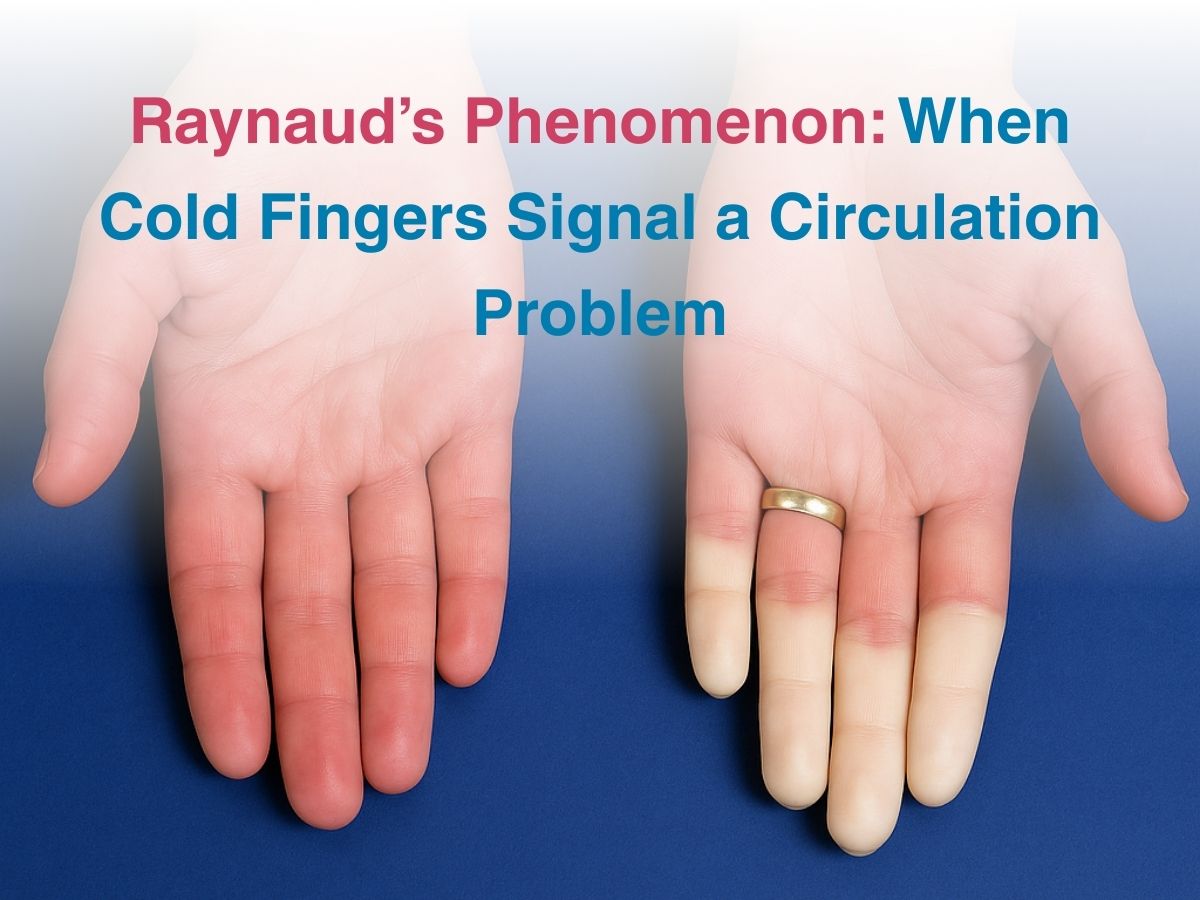
Raynaud’s Phenomenon: When Cold Fingers Signal a Circulation Problem

With winter setting in, cold hands and feet are a pretty common and normal occurrence. But, what should you do if you notice blue coloured fingertips and toes? Is it worrisome? Or is it okay for you to wait till it becomes normal? This rather curious condition that causes white or blue coloured fingers and toes is called Raynaud’s phenomenon, which is different from Raynaud’s disease. The symptoms are caused due to vasospasms that can occur due to a few different causes. Studies have not been conducted in India in great detail about this condition, though estimates say about 5% of the population deals with it and that it is more common in North India during the winters.
What Is Raynaud’s Phenomenon?
Raynaud’s phenomenon is when the tiny capillaries and arterioles in your fingers or toes, lips, ears and nose spasm- causing blood to not flow normally in the affected region. It comes and goes, in episodic attacks and each attack can last for about 10-15 minutes, before blood flow is restored and your hands, feet, nose or ears turn pink and then red like before. Though a concrete reason has not been found to cause this condition, scientists think that having autoimmune disorders can mean that you are at higher risk of suffering from this condition.
Symptoms Of Raynaud’s Syndrome (Cold Hands, Colour Changes)
Unlike Raynaud’s Disease which can come on its own, Raynaud’s phenomenon affects individuals who have other comorbidities, when you take specific medications, get stressed, due to very cold weather or other factors. Some symptoms that you may observe include
- Cold and numb feeling skin
- Your skin changes colour- from blue to white to normal after an attack.
- Some people may report warmth, tingling or throbbing of the affected part.
- You may also notice sores on your fingers, which are pretty painful.
Diagnosis Of Raynaud’s Phenomenon (Nailfold Capillaroscopy, Blood Tests)
Raynaud’s phenomenon by itself is easy to diagnose, as prominent physical changes can be observed. But, catching the underlying cause can require detailed testing. Simple tests like the following may be conducted to confirm a diagnosis
- Nailfold Capillaroscopy– A drop of oil is placed at the base of your nail, which is then observed in greater detail using a microscope. Abnormal or enlarged looking capillaries can mean that you have some connective tissue disease, which means it is secondary Raynaud’s syndrome that you may be dealing with.
- Blood tests– CBC, ANA ESR, RF etc. These tests check for blood cell morphology, number, presence or absence of specific antigens in your blood.
- Pulse volume recording– can be done to check blood flow in your limbs or extremities.
Treatment Options For Raynaud’s Phenomenon
Treatment is done based on what issue is causing the condition. So, a rheumatologist, cardiologist, dermatologist or any such doctor can treat you. Staying warm, not touching cold objects and managing stress can help reduce the probability of suffering from an episode. Drugs like alpha blockers, nitroglycerin ointment and calcium channel blockers may be prescribed for long term management. Surgical intervention may also be needed , if you have vasospasmic episodes often- in such cases, a sympathectomy or getting rid of some nerve endings in your fingertips may help, though this relief will not last for very long.
Conclusion
Preventing Raynaud’s attacks in winter can be slightly harder than usual- as it is cold anyway. You should wear socks, gloves, use a scarf too. Try not to use caffeine or nicotine- as both of them can cause your blood vessels to spasm. Exercising regularly can help ensure better blood circulation overall. Take good care of your skin by moisturising it regularly, including the nails. Making these subtle but sustainable lifestyle changes can help you stay safe and prevent too many recurrent episodes of this condition.






